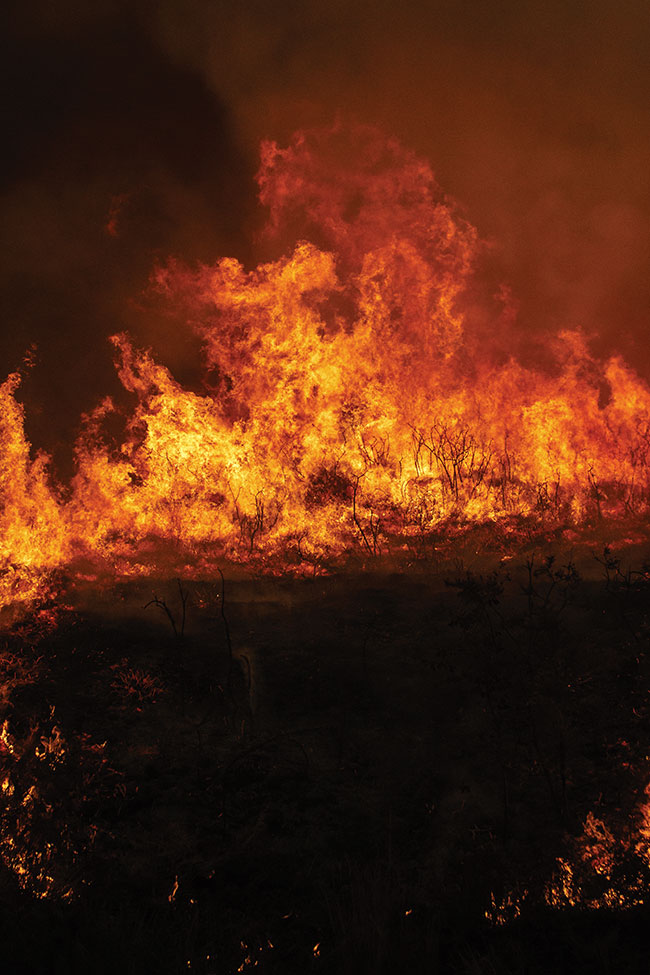
Features
Emergency & disaster management
Hot topics
Beyond Wildfires
Are mass notification systems good for more than just emergencies?
August 20, 2021
By Lauren Telfer
 Photo credit: © Brais Seara / adobe stock
Photo credit: © Brais Seara / adobe stock There’s no question that streamlined communications can help keep people alive, safe, and alert in high-risk moments. That’s why most communities leverage technology like mass notification systems (MNS) for emergency alerts and critical events.
But when you use a MNS exclusively for emergencies, are you missing out on a valuable opportunity to engage your community? To increase enrolment numbers? Or to generate trust, which ultimately contributes to your emergency preparedness?
There may just be more to mass notification technology than you think.
Community engagement drives higher enrolment rates for MNS
The facts are in the numbers. Communities that issue one or more notifications per month experience an organic registration rate of five to 10 times higher than communities that issue notifications one to two alerts per year.
A recent case study revealed that over a six-month period, higher usage-rate communities average an enrolment growth rate of approximately 10 percent month over month, whereas lower usage communities experience about one to two percent growth per month.
The key takeaway is that people talk.
MNS are far more practical beyond emergency alerts. When used responsibly to communicate relevant day-to-day information, more value is added to the community by boosting public awareness of the system and drives increased registration through word of mouth.
To maximize results, communities should engage with citizens on everyday matters that affect their well-being so that when an emergency does occur, more people will recognize you as a trusted authority and are more likely to pay attention to your message, which strengthens your emergency preparedness.
Day-to-day communications can include fire bans and pandemic updates to localized notices for service interruptions, vehicle accidents, garbage, and recycling reminders. There’s no shortage of informational notices that benefit the public, so long as it’s relevant to their proximity and circumstance, and not sent just for the sake of it.
Internally, fire departments can use a MNS as their communication tool for team collaboration, staffing requirements, and important informational notices.
People go hungry for information during times of crisis
As a best practice to further drive community enrolment and engagement, emergency and crisis communications should be accompanied with updates beyond formal evacuation orders and alert zones. That’s because during a crisis, the public goes hungry for information.
One of the most frequently asked questions made during crisis support calls is, “Why did a neighbour or family member receive an alert, but not me?”
Usually, the answer is because one individual resides in an evacuation zone while the other may just be outside of that area. The lack of direct communication to the broader audience during a critical incident can create unnecessary anxiety among the community, and cause them to question whether or not the system is working as it should.
Gain total control over your message
To ensure the public makes informed choices, you need to carefully consider how much information you provide them with and whether it’s relevant to your audience.
Send too many notifications, and they’ll dismiss your messages, which can jeopardize their safety. Send alerts with not enough information, then you risk public frustration or increased harm from incidents.
Fortunately, a MNS can help eliminate message fatigue by honing in on the right message to the right people at the right time.
In seconds, you can send tailored messages to people who face varying levels of impact based on their location across several channels to captivate their attention.
Tiered communications and geofencing allows you to differentiate the level of growing concern in real-time. And enriched alerting provides your audience with visual and audible alerting cues such as personalized maps, photos, and any additional context they need to recognize the severity of the incident and to initiate the appropriate actions to get them out of harm’s way.
What you do in between to prepare for an emergency is just as important as the communications you implement when you’re in the heat of a response.
Mass notification systems provide a way to quickly reach your residents with localized messages that are relevant to their well-being. And when leveraged for both emergencies and day-to-day informational notices, a MNS can help you foster greater trust in your community, increase your emergency preparedness, and drive higher enrolment.
Lauren Telfer is the director of marketing for VoyentAlert! By ICEsoft Technologies.
Print this page